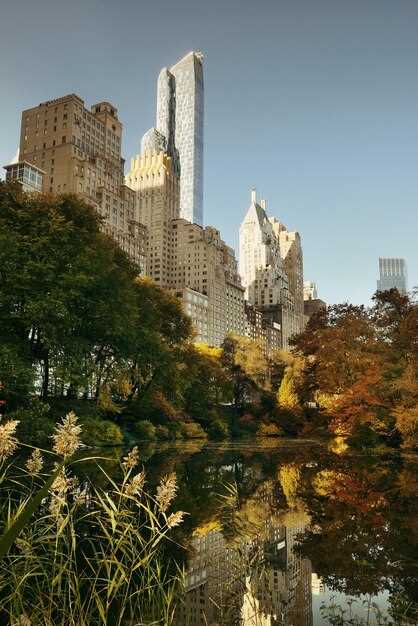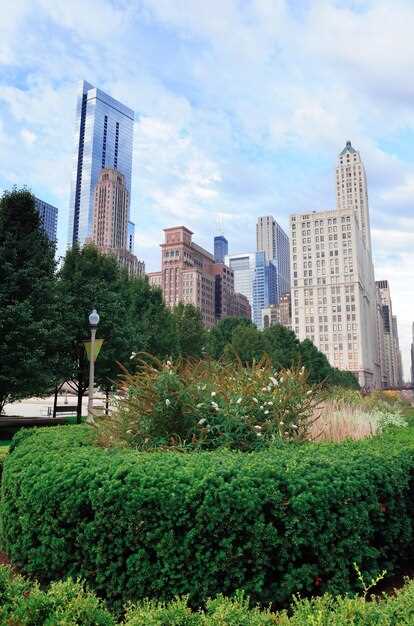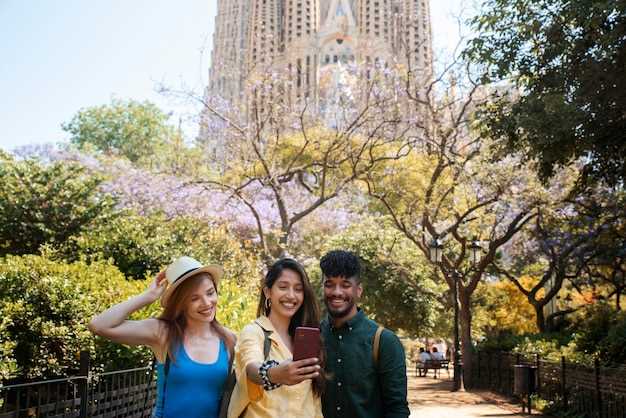
First, tryon rentals nearby make it easy to test gear before you commit to a longer ride. This guide highlights 16 parks across Manhattan, Brooklyn, Queens, the Bronx, and Staten Island, with practical notes on location, times, and how to reach each space. Set your first stop by your preferred transit line and you’ll drop into green space quickly.
Across the city, these spaces provide room for a good day outdoors, whether you want a quick walk, a long ride, or a family picnic. Whatever the weather, you’ll find a park that fits your mood and a route that matches your pace. You can revisit a second park once you finish the first loop.
In parks such as Central Park, Prospect Park, and Flushing Meadows Corona Park, you’ll find a path network that invites bikes and walkers, and you might spot raccoons along the edges of open yards as dusk falls. The guide notes memorials and public art that enrich the experience.
Today the picks span across five boroughs and will reveal a balance of formal grassy spaces and wooded corners. These recreational spaces invite you to move, relax, and observe nature amid city sounds, whether you’re planning a short loop or a longer outing.
To plan well, note the location of entrances, check rentals stalls near the park, and consider the best times to visit for crowds or quiet. For a flexible plan, pick whichever park suits your energy that day and stay connected to your overall route. If you’re curious about national-level culture, pair a park stroll with a nearby museum or memorial along the way.
NYC Parks: A Structured Plan for a Curated Green Space Tour
Start today with a first-stroll through Central Park, the most accessible gateway for a curated green-space tour across manhattans. The 843-acre jewel, held as a constant anchor in the city, blends lawns, woodlands, and iconic bridges, providing a compact introduction to city green spaces and giving you a clear pace for the rest of the route.
From Central Park, head to Prospect Park in Brooklyn for a sprawling loop that includes the Long Meadow, a lake, and several trails that run toward the Ravine. Prospect Park spans 526 acres and is designed for hikers and casual strollers alike, with alfresco seating and plenty of benches that invite people-watching along the grand promenade.
Next, take the train to Queens for Flushing Meadows Corona Park, a 897-acre hub built for the 1964 World’s Fair that now hosts a lake system and the Unisphere. Trails circle the ponds, while open meadows and shaded groves offer spots for a stroll or a longer hike. This park provides space for picnics and plus there are spots with views of the surrounding bridges and skyline–great for capturing photos and people-watching.
To broaden the loop, consider Pelham Bay Park in the Bronx, a sprawling reserve that’s big enough to feel wild but close to the city. It offers varied terrain, including forested trails and water views. In addition, Van Cortlandt Park supplies hilly paths and easy loops. In select programs, horseback riding opportunities exist; if a longer day is taken, swap in Van Cortlandt Park for a more wooded finish.
Need to adapt on the fly? Check the forecast for precipitation and snowfall, and pick a flexible sequence. Bring water, sun protection, and comfortable shoes; plan for alfresco meals when the weather cooperates. The plan uses a practical transit arc, with direct hops reducing travel time and letting you spend more minutes enjoying the green rather than riding the subway. This route gives you much to compare among the boroughs of manhattans, Brooklyn, and Queens, today’s compact sampling that remains easy to repeat.
1-Hour Essentials: Quick Stops for a NYC Park Hop

Begin with a 1.45-mile High Line stroll for skyline views and art, a living corridor that blends hustle with quiet pockets along the waterfront and vast cityscape of skyscrapers, delivering a live experience in the heart of Manhattan.
-
Stop 1 – The High Line (Chelsea to West 34th)
Distance: 1.45 miles. Feature: elevated rails turned into a park with seasonal art, garden beds, and views toward the water. From this vantage you can glimpse ellis island on the harbor; plan about 20 minutes of brisk walking, plus 5–10 minutes for photos or a seat. This site shows history and the way olmstead-era ideas still shape modern parks, with much to see at every bend.
-
Stop 2 – Bryant Park (Midtown)
Distance: ~0.8 miles (15–20 minutes). The plaza-style lawn hosts free events, live performances, and quick theater moments on a compact stage. Neighbors and others looking for a break gather here, and outdoor games dot the lawn. Grab a coffee and enjoy the contrast between the hustle nearby and quiet corners, a clear nod to the science of urban shade and airflow that helps these spaces stay comfortable all summer. If you need a brisk pace, this stop also offers maximum variety in the minimum time.
-
Stop 3 – Union Square Park (Flatiron/Gramercy)
Distance: ~0.6 miles (12–15 minutes). This historic square centers a broad plaza, public art, and a frequent farmers market. Look for sculptures, buskers, and spaces where you can simply look, sit, and reflect on the vast city around you. The area embodies history in every corner and reflects olmstead influence in how greens connect to streets and other sites.
Minimum time: about 50–60 minutes if you move briskly. If you’re looking to extend, you can head toward Queens for a longer loop or finish with a stroll along the waterfront toward ellis once again for a final view; this route fits into an only one-hour window while delivering vast urban variety and reminding you that much of NYC’s green fabric was designed to invite hustle and time to breathe, connecting sites, events, and experiences. For a beach mood, the riverfront paths offer a breeze that feels like a city beach.
Bryant Park Year-Round Highlights: Seasons, Events, and Free Activities
Begin april with a quiet, sun-filled stroll along bryant’s north edge, then let the lawn guide your afternoon. There, you find yourself framed by stunning skyscrapers and a mix of 19th-century structures that lend the park its character. From that vantage, plan a short excursion that blends greens, benches, and a quick food stop. Whether you’re exploring with friends or exploring solo, bryant Park makes a friendly stage for anyone.
Winter highlights return with the Bryant Park Ice Rink and the Holiday Market, turning the lawn into a stunning city tableau against glassy towers. Food vendors offer warming bites, and facilities keep visitors comfortable with restrooms and heated seating. As spring ushers in april and the days grow longer, the calendar shifts to free performances on the central lawn, plus occasional author talks and family activities. Autumn colors sprinkle the planters, while the park stays busy with casual strolls and quick breaks.
Free programming welcomes anyone: chess & checkers tables, rotating outdoor workouts, and family activities. From the edge, an eagle-eyed view reveals the skyline framed by bridges, and the city’s memory–soldiers once moved along these streets–adds depth to your walk. Facilities include clean restrooms, accessible paths, and water fountains, plus bikes and nearby CitiBike stations that make it easy to reach the park. After your visit, a short stroll toward the river’s pier offers a final harbor breeze. You’ll find seaglass tones in the fountain spray at dusk and new discoveries each time you explore, making this space welcoming to anyone who wants to explore.
Family-Friendly Parks: Play Areas, Picnics, and Accessibility

Plan your first afternoon at Prospect Park with a strategic mix of play and picnic space: a well-placed playground cluster sits near flat ground and gentle walkways, making it ideal for hands-on fun and easy snacks.
Choose parks with wide, strategic walkways and accessible restrooms so both strollers and grandparents move without stops. The ground cover matters too: rubberized surfaces reduce impact during energetic play, and open space adjacent to the playground invites rest and quick games.
The playground palette matters: expect equipment that includes swings and climbers, plus a paddle area near the lake where families can paddle a boat after the snack break. In Central Park, the nearby theater area hosts kid-friendly performances on holiday weekends, turning an ordinary afternoon into a memorable outing.
Around Prospect Park and similar parks, storytime sits under shaded trees: a volunteer named alice leads a short read-aloud, almost like a mini theater in the park. Meet alice and learn new words as kids listen; this activity helps families connect without turning a picnic into a rush.
Tourists and locals alike enjoy a stroll along walkways that span multiple blocks, with stops for a quick photo and a bite. The prospect of a calm afternoon becomes easier when you plan ahead: pick a day in october when mild air and leaf color invite longer stays, and map out how to stop at a few ground-level play spaces before boarding a ride back home.
Nearby, a Dutch-inspired promenade and a former freight rail corridor show how urban greenspace transforms with the seasons. This space, once freight-lined, now serves as a family-friendly ground for walking, picnicking, and impromptu games, with quiet corners for learning and memory making.
Hidden Gems: Quieter Parks with Big Appeal
Visit Carl Schurz Park on the East Side for an hour of calm away from the bustle. The lawns and stone terraces are placed along the East River, offering views of Gracie Mansion and a quiet promenade that contrasts with Midtown’s pace. These paths loop throughout the park, near the mansion grounds, providing highlights that feel almost private even on weekends.
Inwood Hill Park in Upper Manhattan provides a genuine escape for those who want to explore without crowds. The wooded hills run throughout the park, with various trails that wind down to the river and around the old salt marsh. An hour here reveals an intriguing mix of nature, birdlife, and city views that feel a world away from the east side bustle.
Queens’ Alley Pond Park offers a long, peaceful loop around wetlands that appeal to families and birdwatchers alike. The area feels designed to protect habitat, with signage that explains the ponds throughout the park. Volunteer Walter leads weekend walks, sharing Putnam-era history of the area and pointing out memorials along the path. These last stretches of the loop highlight the park’s quiet charm and accessibility from various neighborhoods.
Bushwick Inlet Park in Brooklyn’s Williamsburg gives Brooklyns craving skyline views a calmer option along the East River. A short walk from the village vibe, the park’s marsh edges and boardwalks serve as a serene counterpoint to nearby galleries and cafes. In a quiet corner, you might notice a mural with egyptian motifs that adds a playful twist to the scene. The last mile of the loop is ideal for a family stroll, or for a quick, restorative pause before returning to the bustle of the city.
Along the west side, Riverside Park offers pockets of calm between playgrounds and piers, especially from 72nd Street to 105th Street. Highlights include river views, shaded lawns, and benches where you can sit for an hour and watch boats slip by. These spaces are designed throughout to serve locals from the village to the city’s core, with easy access for all, and they remind visitors that you can always find a quiet moment in this national metropolis.
Transit and Access: Fast Routes, Subways, and Parking Tips
Recommendation: Take the subway to the park entrance closest to your plan to start exploring quickly and avoid curbside parking hassles. Most parks sit near a west-side hub, with a short walk to trails and attractions.
Use the MTA trip planner to compare routes and aim for a stop within a 10- to 15-minute walk of the main entrance. A single transfer often yields the fastest option to reach a specific location or attraction, with express routes saving minutes on longer connections.
Parking is limited near year-round favorites; plan to arrive early or after peak hours, and consider municipal garages or street lots that offer clear rates. If you prefer transit, park-and-ride spots near a hub provide long-term options and meer flexibility.
Seasonal notes help plan a visit: in october, crowds swell around cherry trees and wildflowers along the trails; penguins appear at nearby zoo attractions, a famous addition for families. Vendors along popular routes offer snacks and gear, giving you a special stop with each park location.
West-side and country-wide access converge on a mosaic of long, open spaces that are part of the york city experience. Some parks feature roller paths along promenades, adding a playful option for families. Lefrak developments add convenient parking and long-term options in some locations, making year-round visits easier. The climate stays favorable for exploration across the greatest collection of attractions, trails, and quiet corners, inviting you to explore, discover, and return for another season.
